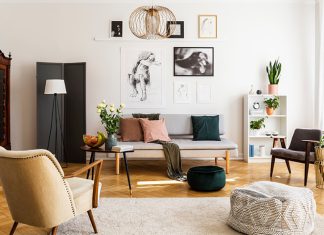As your family expands, your lifestyle evolves, or your needs change, it’s only natural to feel that your current living situation might no longer suffice. While moving to a larger property is an option, it involves significant disruption and expense. Fortunately, there are numerous ways to add extra space to your existing home without the need for relocation. Here’s a comprehensive guide to help homeowners explore and execute their options for increasing their living space effectively and efficiently.
Evaluate Your Needs
Before embarking on any project to expand your home, it is crucial to first evaluate your specific needs. This step involves assessing how you use your current space and identifying areas where additional space would be most beneficial. Do you need another bedroom for a growing family, or are you looking to create a home office where you can work remotely in comfort? Maybe you want a larger kitchen for entertainment or a dedicated playroom for your children. Understanding your goals will help you make informed decisions and ensure that the space you add will serve its intended purpose. Take the time to list your priorities and think about how your needs might evolve in the future.
Consider a Room Addition
One of the most direct methods for adding extra space to your home is through room additions. This could involve building a new room from scratch or extending an existing one. This approach can be quite costly, but it offers significant benefits, including the potential to increase your home’s value. A room addition can transform underutilized areas or provide completely new functional spaces. When planning a room addition, engage with architects and contractors to discuss your vision and get a detailed estimate of the costs. They can help you navigate the complexities of design, structural modifications, and obtain the necessary permits. The key is to ensure that the new space integrates seamlessly with your existing home, both aesthetically and functionally.
Explore Loft Conversions
If your home has an attic or loft space that is currently unused, consider a loft conversion as a practical solution for gaining additional living space. Transforming your loft can provide a new bedroom, a home office, or a cozy relaxation area, all without altering the footprint of your home. This type of conversion can be less disruptive compared to other forms of expansion and often requires fewer major structural changes. Before starting, ensure that your loft is properly insulated and that it meets local building regulations. This includes making sure that it has adequate ventilation, proper access, and sufficient headroom. Loft conversions can significantly enhance the value of your property while providing a valuable new space tailored to your needs.
Utilize Your Basement
Basements are often underutilized areas that can be transformed into functional living spaces. Many homeowners find that finishing their basement is a cost-effective way to add substantial living area to their homes. A basement conversion can turn what is often a dark, unused area into a bright, welcoming space suitable for a variety of purposes, such as a family room, home gym, or entertainment center. Properly finishing a basement involves addressing issues such as waterproofing, insulation, and lighting. It’s essential to ensure that the basement is dry and comfortable, which may involve installing a sump pump, improving drainage, and using moisture-resistant materials. Working with a professional contractor can help ensure that the conversion meets building codes and provides a safe, enjoyable space.
Optimize Existing Spaces
Sometimes, the key to feeling like you have more space isn’t about adding new areas but rather optimizing the ones you already have. Consider reorganizing and redesigning your current spaces to make them more functional. This might involve rearranging furniture to create a more open and efficient layout or incorporating built-in storage solutions to reduce clutter. Repurposing underused rooms can also make a significant difference. For example, a seldom-used formal dining room could be transformed into a home office or a play area for children. The goal is to maximize the utility of your existing space, creating a more comfortable and functional environment without the need for extensive construction.
Conclusion
Adding extra space to your home can dramatically improve your quality of life and increase your property’s value. Whether you’re considering a room addition, a loft conversion, or optimizing your existing areas, there are numerous ways to create a more functional and enjoyable living environment. Each option comes with its own set of considerations and potential benefits, so it’s important to plan carefully and consult with professionals to ensure that your project is successful. By taking a thoughtful approach and addressing both current and future needs, you can create a home that meets your expectations and enhances your living experience for years to come.













